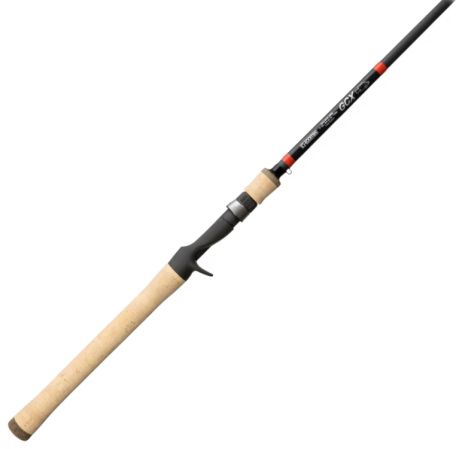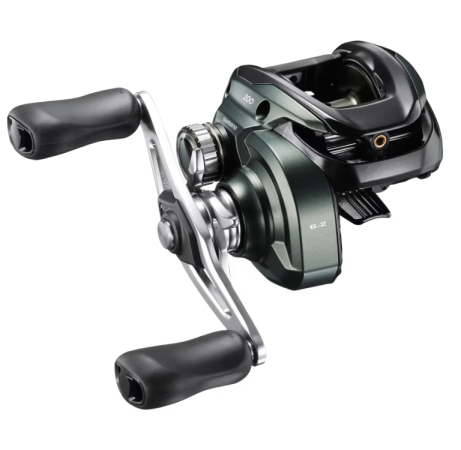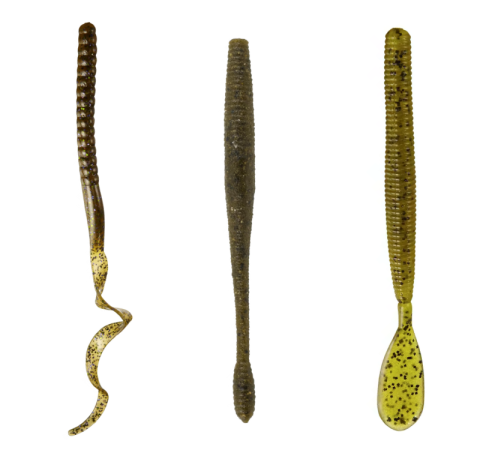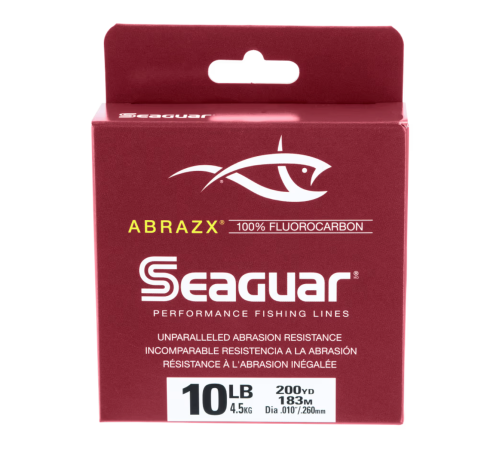Ever since bass fishing became mainstream in the 70’s, we’ve seen many techniques come and go. Whether they’ve been replaced by newer tactics, or simply lost to time, bass anglers quickly forgot just how effective these presentations used to be. The Carolina rig is one of those seemingly lost techniques, but when it’s employed today it can still produce banner days on the water.
Whether you’re fishing around aquatic vegetation, rock piles, or offshore ledges, the Carolina rig shines. It requires a slow and methodical strategy, but it can produce bites when the water temperatures rise and bass get lethargic. If you’re looking to learn a new (and old) technique to help you land more bass when the heat of summer is on, you’ve come to the right place. Here’s everything you need to know about fishing a Carolina rig.
Understanding the Carolina Rig
Photo by Derek Horner
The reason that the Carolina rig catches so many fish during the summer boils down to its slow and noisy presentation. Some anglers have aptly named it the “drag rig”. It’s primarily dragged along the bottom near structure that bass use as feeding areas. The soft plastic trails behind a mass of clacking glass beads and a heavy weight, which stirs up the bottom and causes a ruckus that even the most sluggish of bass will want to check out. The entire rig measures upwards of 24-inches long. As you continue to pull the rig, your soft plastic will ideally be floating just off the bottom and running right into bass.
How to Rig a Carolina Rig
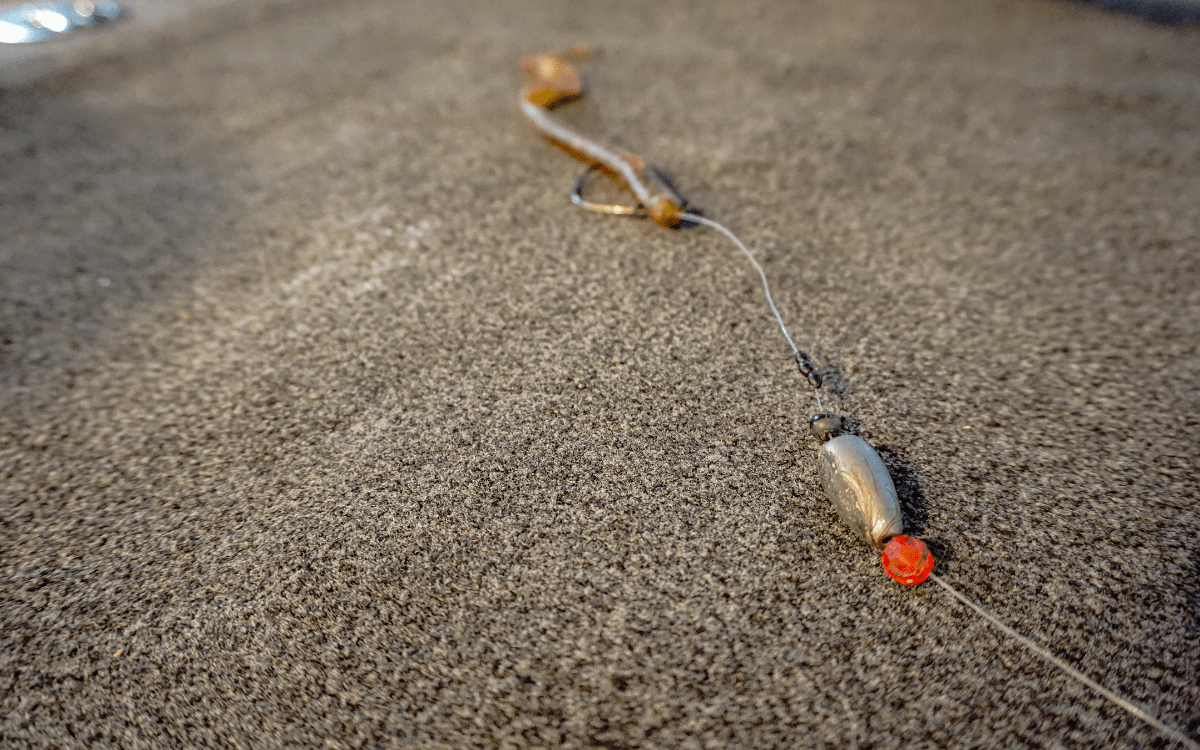
Photo by Derek Horner
The standard Carolina rig is made up of quite a few components, but I’d be willing to bet you already have the tackle you need in your terminal box. For starters, to prevent line twist, you’ll need a barrel swivel to tie your main line to. You’ll also need some glass beads, some bobber stoppers, a Carolina rig weight, and a 3/0 or 4/0 EWG hook. All in, it should take about 2-minutes to rig up and be ready to fish. Below is a step-by-step guide.
Step 1: Take the main line coming off of your reel and tie it to the barrel swivel using a Palomar knot.
Step 2: Grab your fluorocarbon leader and cut off 18- to 24-inches of line. Tie that to the other end of your barrel swivel using a Palomar knot.
Step 3: Thread on your glass bead first, followed by the weight, followed by a second glass bead. If you want more noise, simply add more glass beads above and below the weight.
Step 4: To protect the eventual knot you tie to your EWG hook, thread on two or three bobber stoppers below your second glass bead. This will prevent the weight and beads from sliding too far down the leader and bouncing into your knot.
Step 5: Using a Palomar knot, tie the bottom of your leader line to the EWG hook and thread on your soft plastic of choice rigged weedless.
What Makes the Carolina Rig so Effective?
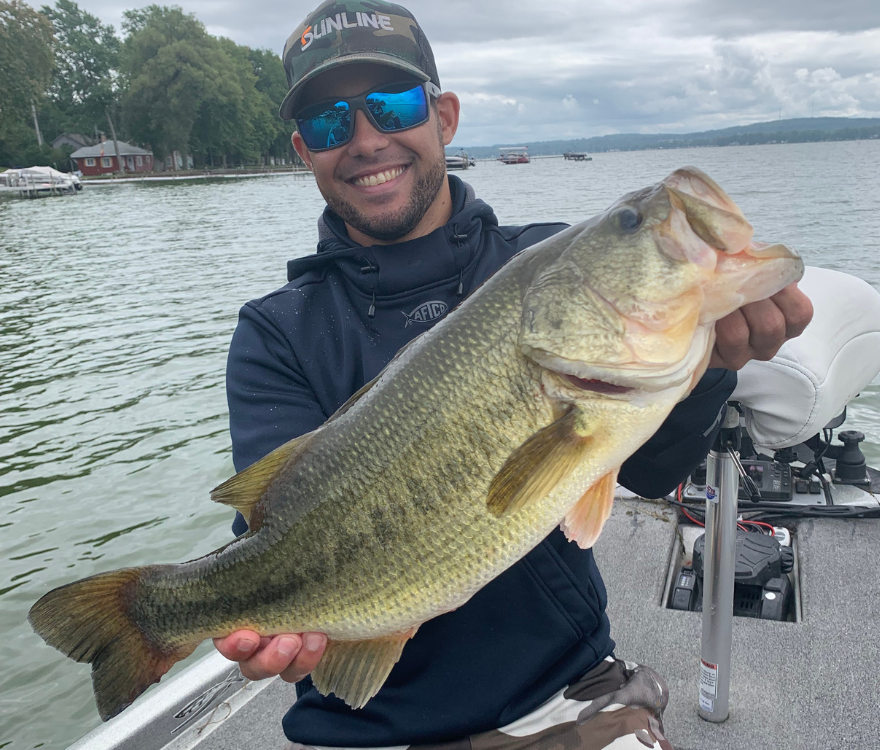
Photo by Derek Horner
The Carolina rig catches bass simply by being obnoxious underwater. Every time you sweep your rod to drag the rig along the bottom, the weight is smacking into the glass beads and making a clacking noise. This sound is similar to the noise a crawfish makes as it scurries across rocks along the bottom, or the noises smaller baitfish make when feeding on micro and macro-invertebrates. But honestly, it doesn’t really matter what the noise is supposed to sound like, what matters is that the noise triggers a predatory response for the bass to feed.
As you drag your Carolina rig past primary feeding areas like rock piles, grass lines, offshore ledges, and brush piles, bass will inevitably sense the noise and come over to check it out. As the weight and beads stir up the bottom, the bass won’t be able to see exactly what is causing all of the commotion. As you continue to drag the rig, your trailing soft plastic will come into view, and typically, the second they see your bait, the fish’s feeding instincts kick in.
The final piece to the puzzle is the large EWG hook. Once you’re able to trick the bass into biting, your big sweeping hookset will bury the EWG hook into the roof of their mouth, making it tough for them to come unpegged during the fight. Due to the weight of the rig, lighter wire hooks typically don’t do the trick, so stick with a 3/0 or 4/0 to avoid heartbreak.
For a deep dive video on the Carolina rig, check out this great video from my friend TylersReelFishing.

When to Throw a Carolina Rig
As with most bass techniques, you can throw a Carolina rig at practically any time of the year and probably get a few bites. But the best time to throw a Carolina rig in is the middle of the summer. During the hottest days of the year, bass will follow the thermocline to find cool water in which to hang out in. Typically, these summer haunts revolve around deep water structure and cover. These areas are perfect for a fast-sinking Carolina rig.
When the bass stage on these offshore areas, they typically stay just off the bottom, lethargically swimming around waiting for a crawfish or baitfish to present a good feeding opportunity. Since the Carolina rig allows your soft plastic to hover a few inches above the bottom while being dragged behind the weight and beads, your bait is going to be at eye level. This makes it an easy meal for the bass, and an easy day of catching for you.
The Gear for Fishing a Carolina Rig
Picking the Right Carolina Rig Rod
Since the Carolina rig is heavy and the leader is so long, it can be practically impossible to cast if you don’t have the right rod. I prefer the G.Loomis E6X, but since that’s been discontinued, my newest Carolina rig rod is the G.Loomis GCX 7’6” medium-heavy fast action Mag Bass rod. It’s long enough to allow you to make long, accurate casts, and offers plenty of sensitivity when dragging the rig along the bottom.
Picking the Right Carolina Rig Reel
Unlike the need for a specialized rod, the Carolina rig can be fished on almost any casting reel. I personally like to use heavy-duty casting reels with a quality drag in a 7.2:1 or faster gear ratio. The gear ratio is the most important aspect to me. When bass bite the Carolina rig, it can take a bit for you to feel the hit, giving the bass time to create slack in the line if they’re swimming toward you (this is not a good thing). A high gear ratio reel will let you wind up the slack line quickly before making your hook set, ensuring that the hook finds its mark. My go-to is the Shimano Curado M in a 7.4:1 gear ratio. The reel offers extended line capacity for long casts and a beefy drag system to help you winch big bass back to the boat.
The Best Carolina Rig Baits
When you’re hitting the water with a Carolina rig, the soft plastic you choose can make a world of difference. I almost exclusively fish a soft plastic worm on my Carolina rigs, but realistically, you can fish any soft plastic bait including, but not limited to, worms, swimbaits, crawfish imitators, and grubs. For the sake of saving you time and money, I’d recommend these three soft plastic worms to get started. My go-to soft plastic worm is the Zoom Ol’ Monster; it’s a big worm that consistently gets me some big bites. From there, depending on the mood of the bass, I lean on either the Berkley PowerBait MaxScent Hit Worm or the Zoom Speed Worm. If you hit the water with these three worms for a day of Carolina rigging, you should be more than prepared for whatever the bass want.
The Terminal Tackle You Need for a Carolina Rig
As you’ve seen from the how to rigging instructions, there’s quite a bit of terminal tackle needed for a Carolina rig. Below is everything you need:
If you’re looking to skip a few steps during the rigging process, you’re in luck. There are also pre-rigged Carolina rig weights and beads you can purchase. The Bass Pro Shops Carolina Shortcut rig can save you time when you’re on the water.
Line for Carolina Rigs
I recommend using fluorocarbon when fishing a Carolina rig, but even then, not just any fluorocarbon will do. I always reach for 17-pound Seaguar AbrazX. It’s heavy enough that I’m not worried about breaking the knots during the hookset, and the AbrazX helps keep your leader intact while dragging it along the bottom. As for the main line coming off the reel, you can run the same fluorocarbon, or for more sensitivity, use a 30-pound braided line like PowerPro Super 8 Slick V2 braided line.
Read Next: 3 Old-School Bass Lures the “Cool Kids” Hate (and Why You Should Be Fishing Them Now)
Final Thoughts and Tips on How to Fish a Carolina Rig
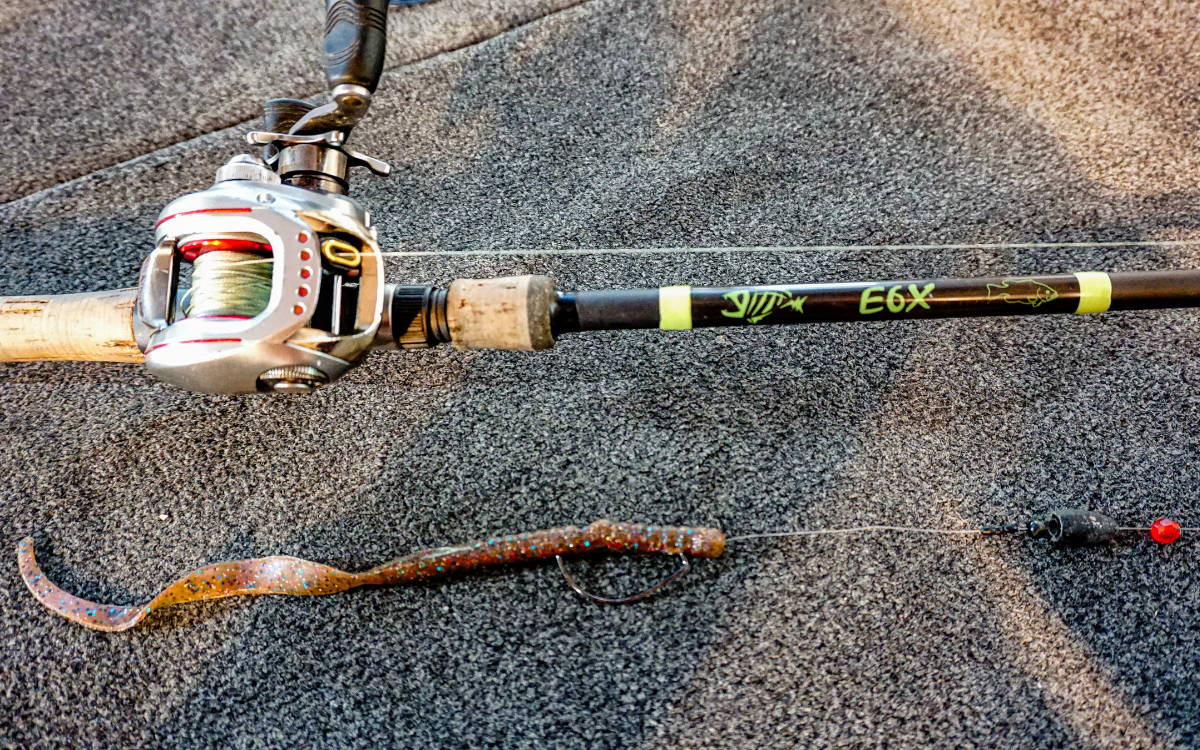
Photo by Derek Horner
The Carolina rig has been overlooked for years now, but when the dog days of summer roll around, it’s one of my favorite techniques. It catches big bass, and lots of them. While it can be a bit intimidating to tie up at first, once you’ve done it a few times, you’ll realize how easy and quick it can be to rig.
When you’re fishing the Carolina rig, a slow drag with 5-second pauses between sweeps is a great way to get bites. When a big bass bites, you’ll know. Sometimes they’ll even rip the rod out of your hands. After you feel the bite, a big, sweeping hookset (as opposed to a snapping hookset) is your best bet to ensure you get the EWG hook buried properly. If you’re looking for a great way to catch mid-summer bass, do yourself a favor and tie up a Carolina rig before your next trip.

